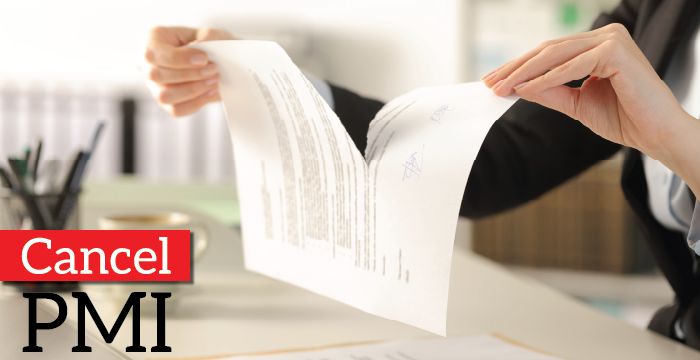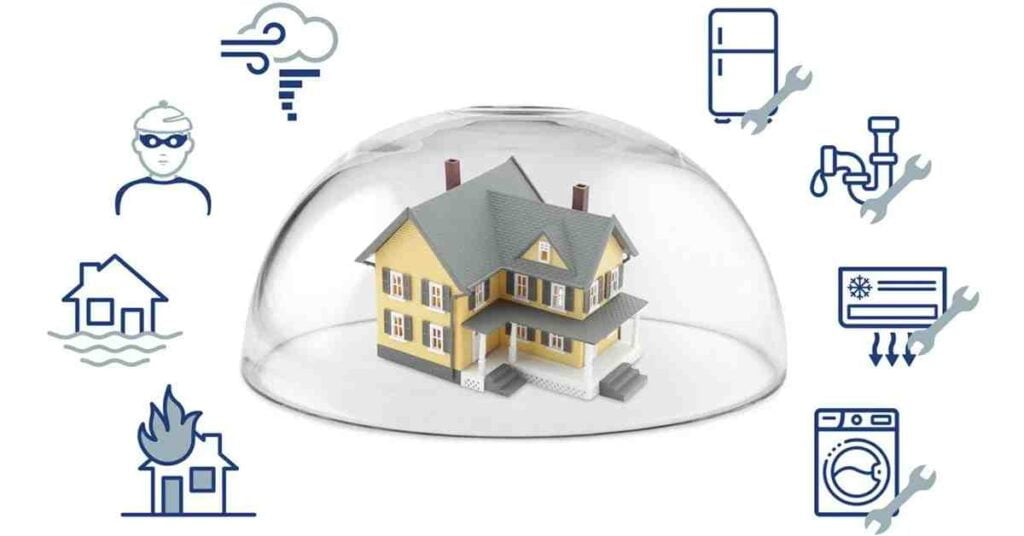Homeownership is a dream for many, but it often comes with some unexpected costs. One of these is Private Mortgage Insurance (PMI), a policy that protects lenders from potential default. But what happens when your home value increases? Can you cancel your PMI? This article explores this question in detail, providing insights into the world of PMI, its cancellation requirements, and how an increase in home value can impact it. Whether you’re a first-time homeowner or a seasoned real estate investor, this guide will help you navigate the complexities of PMI cancellation.
What is PMI?

Private Mortgage Insurance (PMI) is a type of insurance policy that protects lenders from the risk of default and foreclosure. PMI is typically required when a homebuyer makes a down payment of less than 20% of the home’s purchase price. This insurance allows lenders to offer loans to homebuyers who might not be able to afford a conventional down payment or otherwise do not qualify for PMI exemption.
The purpose of PMI is to protect the lender in case the borrower fails to fulfill their mortgage obligations. It benefits lenders by reducing their risk and enabling them to recover their costs if a borrower defaults on their loan. However, it also benefits borrowers by enabling them to purchase a home with a smaller down payment.
PMI is typically required until the borrower has reached an 80% loan-to-value (LTV) ratio, meaning they have built up at least 20% equity in their home. However, the exact requirements can vary depending on the lender and the specific loan agreement. It’s always a good idea for homeowners to understand the terms of their mortgage agreement and to consult with a financial advisor or housing counselor for personalized advice.
Remember, while PMI can help you get into a home sooner, it’s an additional cost that should be factored into your overall home-buying budget. It’s important to understand how it works, why it’s required, and when it can be cancelled.
Impact of Home Value Increase on PMI
An increase in the value of your home can indeed impact your Private Mortgage Insurance (PMI). Here’s how:
PMI is typically required when a homeowner makes a down payment of less than 20% of the home’s purchase price. The PMI protects the lender if the homeowner defaults on their mortgage. However, once the homeowner has built up 20% equity in their home, they can request to cancel the PMI.
Now, if the value of your home increases significantly after you’ve purchased it, this could mean that you’ve built up more equity in your home. For example, if you bought your home for $200,000 with a down payment of $20,000, you’d start with 10% equity in your home. If the value of your home increases to $250,000, that $20,000 down payment now represents 8% of the home’s value, meaning you now have 28% equity in your home.
This increase in home value could potentially allow you to cancel your PMI earlier than expected. However, it’s important to note that most lenders will require a new appraisal of your home to confirm its increased value. There may also be specific rules and requirements for PMI cancellation that can vary by lender and loan type.
Remember, while an increase in home value can potentially help you cancel your PMI earlier, it’s always a good idea to speak with a financial advisor or your lender to understand your options and the potential costs and benefits. It’s also important to keep in mind that while home values can increase, they can also decrease, which could impact your equity and your PMI.
PMI Cancellation Requirements
Cancelling Private Mortgage Insurance (PMI) can lead to significant monthly savings for homeowners. However, there are specific conditions that must be met before you can say goodbye to this additional insurance cost. Here’s what you need to know:
- Equity Threshold: Typically, you need to have at least 20% equity in your home. This can be achieved either through paying down your mortgage balance or through an increase in your property’s value.
- Good Payment History: Ensure you have a consistent track record of making timely mortgage payments. Lenders will look at your payment history when considering a request for PMI cancellation.
- Written Request: The cancellation process begins with a formal written request to your mortgage lender or servicer.
- Current Loan Status: Your mortgage must be current, with no recent missed or late payments.
- Property Value: You may need to prove that the value of your home hasn’t decreased and that there are no subordinate liens on the property. An appraisal might be required to establish the current value of your home.
- Automatic Termination: By law, PMI is automatically terminated when your mortgage balance reaches 78% of the original value of your home, provided you are current on your payments.
- Midpoint of Amortization: Regardless of the equity position, PMI must be cancelled when your loan reaches the midpoint of its amortization schedule if you are current on your payments.
Understanding these requirements is crucial for homeowners looking to reduce their monthly mortgage expenses by cancelling PMI.
Step-by-Step Guide to Cancelling Your PMI
Cancelling Private Mortgage Insurance (PMI) involves a specific process. Here’s a general outline of the steps you might need to take:
- Review Your Mortgage Statement and Loan Documents: Check your current loan balance and find the original property value to calculate your current loan-to-value (LTV) ratio.
- Assess Your Home Equity: Determine if you have reached the 20% equity threshold required for PMI cancellation. This may involve getting a professional home appraisal.
- Contact Your Mortgage Lender: Reach out to your lender to inquire about their specific process for PMI cancellation. They may have forms for you to fill out.
- Submit a Written PMI Cancellation Request: If you meet the equity requirement, send a written request to your lender asking to cancel PMI.
- Continue Making Payments: While your request is being processed, continue to make your regular mortgage payments on time.
- Prepare for Appraisal: If required by your lender, schedule a home appraisal to confirm your home’s current value.
- Follow-up: Stay in contact with your lender to ensure your request is being processed and to provide any additional information needed.
- Confirm Cancellation: Once your lender approves the cancellation, you will receive a confirmation letter. Ensure your mortgage statement reflects the removal of PMI.
- Understand Automatic Termination: Know that PMI will automatically terminate once your mortgage balance reaches 78% of the original property value, provided you’re current on your payments.
- Check for Refunds: Some homeowners may be eligible for a PMI premium refund if they have made advance payments. Check with your lender.
Remember, these are general guidelines and the exact process can vary by lender and loan type. Always check with your lender to understand the specific process for cancelling your PMI.
Benefits and Drawbacks of Cancelling PMI

When considering the cancellation of Private Mortgage Insurance (PMI), it’s important to weigh both the benefits and drawbacks. Here’s a balanced view:
Benefits of Cancelling PMI:
- Lower Monthly Payments: The most immediate benefit of cancelling PMI is a lower monthly mortgage payment. PMI can cost between 0.5% to 1% of the entire loan amount on an annual basis. So, eliminating PMI can result in substantial savings.
- Increased Cash Flow: With the reduction in monthly payments, homeowners can have increased cash flow that they can use for other purposes like home improvements, paying off debt, saving for retirement, or investing.
- Faster Loan Payoff: If you choose to continue making the same monthly payment after cancelling PMI, the extra money will go towards the principal of your loan, potentially shortening the term of your loan and saving you on interest.
Drawbacks of Cancelling PMI:
- Cost of Appraisal: In order to cancel PMI, homeowners often need to get a new appraisal to prove to their lender that their home’s value has increased. This can be costly.
- Time and Effort: The process of cancelling PMI can be time-consuming. Homeowners need to write a letter to their lender, and it may take time for the lender to process the request.
- Risk of Not Meeting Requirements: There’s also the risk that even with a new appraisal, the homeowner might not meet the requirements to cancel PMI. For example, if the housing market drops and the home’s value decreases, the homeowner might not have enough equity to cancel PMI.
What Happens If I Stop Paying My Home Insurance?
In conclusion, cancelling PMI can lead to substantial financial benefits, particularly in terms of monthly savings and increased equity. However, homeowners should consider the upfront costs and effort involved in the cancellation process, as well as the potential risks associated with reallocating their savings. It’s crucial to analyze your individual financial situation and long-term goals before making a decision.
Alternatives to PMI
When considering alternatives to Private Mortgage Insurance (PMI), there are several options that homeowners can explore to avoid or eliminate the need for PMI on their mortgage. Here are some common alternatives:
- Lender-Paid Mortgage Insurance (LPMI): The lender pays for your mortgage insurance in exchange for a higher interest rate on your loan. While this eliminates the need for monthly PMI payments, it may result in higher interest costs over the life of the loan.
- Piggyback Loan: Also known as an 80/10/10 loan, this involves taking out a second mortgage for 10% of the home’s value, along with your primary mortgage for 80%. The remaining 10% comes from your down payment. This avoids PMI because the first mortgage is at an 80% loan-to-value ratio.
- Single-Premium Mortgage Insurance: You pay a one-time upfront premium for mortgage insurance, which can be financed into the loan or paid in cash at closing. This can be more cost-effective than monthly PMI payments if you plan to stay in your home for a long time.
- VA Loan: If you’re a veteran, you may qualify for a VA loan, which does not require PMI regardless of your down payment size. VA loans are backed by the Department of Veterans Affairs.
- Homeownership Investment Programs: Some companies offer to invest money in your home in exchange for a share of the appreciation when you sell. This can provide funds for a larger down payment and help you avoid PMI.
- Higher Down Payment: Saving for a larger down payment to reach the 20% threshold can eliminate the need for PMI altogether.
- Credit Union Loans: Some credit unions offer their own mortgage products that do not require PMI, even with down payments below 20%.
- Doctor Loans: Certain lenders offer specialized mortgage products for doctors, which often include no PMI options despite lower down payments.
It’s important to compare the costs and benefits of each option to determine the best strategy for your financial situation.
FAQs
Q 1. What is the difference between PMI and MIP (Mortgage Insurance Premium)?
Ans. PMI stands for Private Mortgage Insurance and is typically associated with conventional loans. MIP, on the other hand, stands for Mortgage Insurance Premium and is associated with FHA loans. Both serve the same purpose—to protect the lender if the borrower defaults on their loan—but they are associated with different types of loans and have different cancellation policies.
Q 2. Can I cancel PMI if my home value decreases?
Ans. Unfortunately, a decrease in home value might make it harder to cancel PMI because it increases your loan-to-value (LTV) ratio. You typically need an LTV ratio of 80% or less to cancel PMI.
Q 3. What happens if my lender refuses to cancel my PMI?
Ans. If your lender refuses to cancel your PMI, ask them why. It might be because you haven’t met the necessary requirements, such as reaching the 80% LTV ratio or having a good payment history. If you believe you’ve met the requirements and your lender still refuses, you can file a complaint with the Consumer Financial Protection Bureau.
Q 4. Are there any penalties for cancelling PMI early?
Ans. There are typically no penalties for cancelling PMI early, but you’ll need to meet your lender’s requirements for cancellation. This usually involves reaching an 80% LTV ratio and having a good payment history.
Q 5. How does refinancing affect PMI?
Ans. Refinancing can potentially eliminate PMI if your new loan amount is 80% or less of your home’s current value. However, refinancing comes with its own costs, so you’ll need to weigh these against the potential savings from cancelling PMI.
Q 6. Can PMI be tax-deductible?
Ans. PMI can be tax-deductible, but it depends on your income and tax situation. The rules can change from year to year, so it’s a good idea to consult with a tax advisor.
Q 7. How does PMI cancellation differ for FHA loans?
Ans. FHA loans have their own form of mortgage insurance, known as an MIP, which cannot be cancelled when the LTV ratio reaches 80%. For loans originated after June 3, 2013, the MIP can only be removed when the loan is paid in full.
Conclusion
In conclusion, the journey of homeownership is filled with many financial considerations, one of which is Private Mortgage Insurance (PMI). While PMI can initially help you secure a mortgage with a lower down payment, it’s important to understand when and how you can cancel it. An increase in your home’s value can potentially accelerate this process, saving you money in the long run.
However, it’s crucial to be aware of the requirements and process for PMI cancellation, as well as the potential benefits and drawbacks. As always, consulting with a financial advisor or mortgage professional can provide personalized guidance based on your individual circumstances. Remember, every homeowner’s journey is unique, and understanding all aspects of your mortgage can help you make the best decisions for your financial future.

Join Shubham, a finance enthusiast with a mission to empower readers with the knowledge and tools to achieve financial freedom. Discover smart financial advice and unlock your financial potential.


